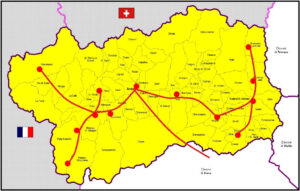
We decided to discover it slowly by organizing our 2 weeks in order to experience different parts of this small but large Italian region.
We arrive in Aosta, the hand caresses the fresh air from the window of our car.
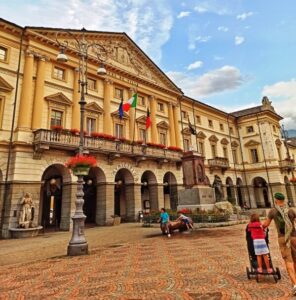
We will use Aosta as a starting point for the first few days and to discover the various castles in the surrounding area, but beware, the city itself has a lot to offer thanks to its ancient history! Here you can forget about the car (just be careful to choose the right parking lot to avoid paying a lot per day even if: from 18 to 08 they are all free).
We decide to stay at: StudiO’ Chanoux, a delightful apartment on the first floor of a historic building located in a courtyard adjacent to the square of the same name. Everything here is studied in detail.
This accommodation is located in the heart of Aosta and has everything we need, a nice kitchen, a large fridge, comfortable beds and a super Artari coffee that we didn't know about.
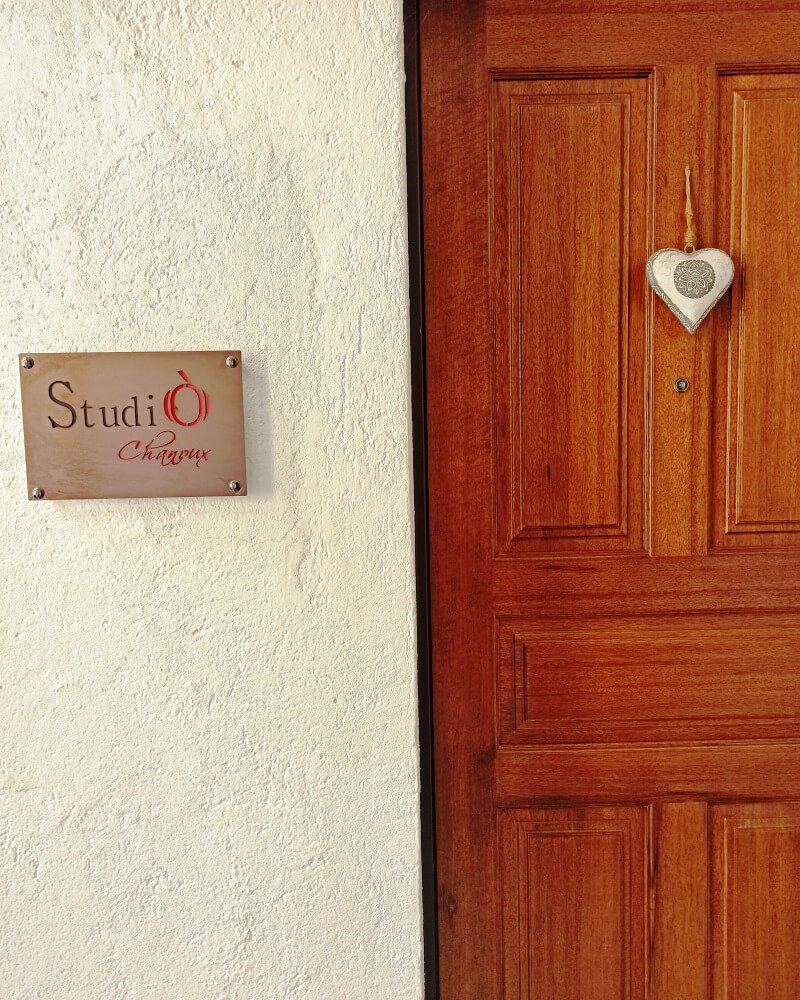
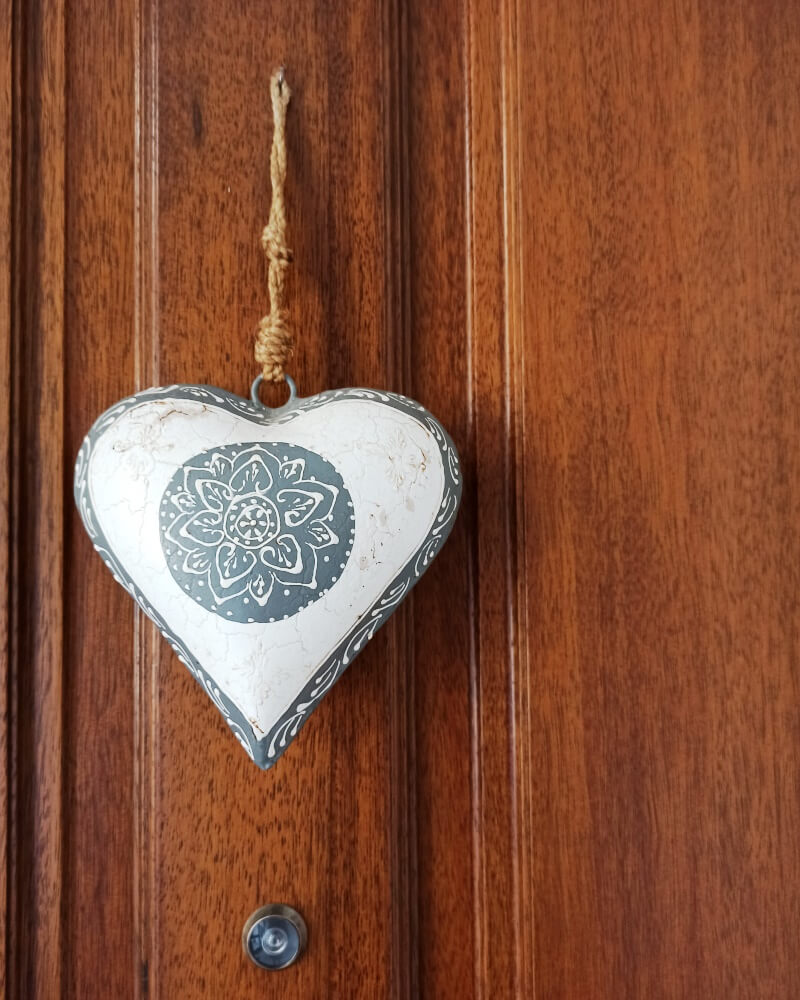
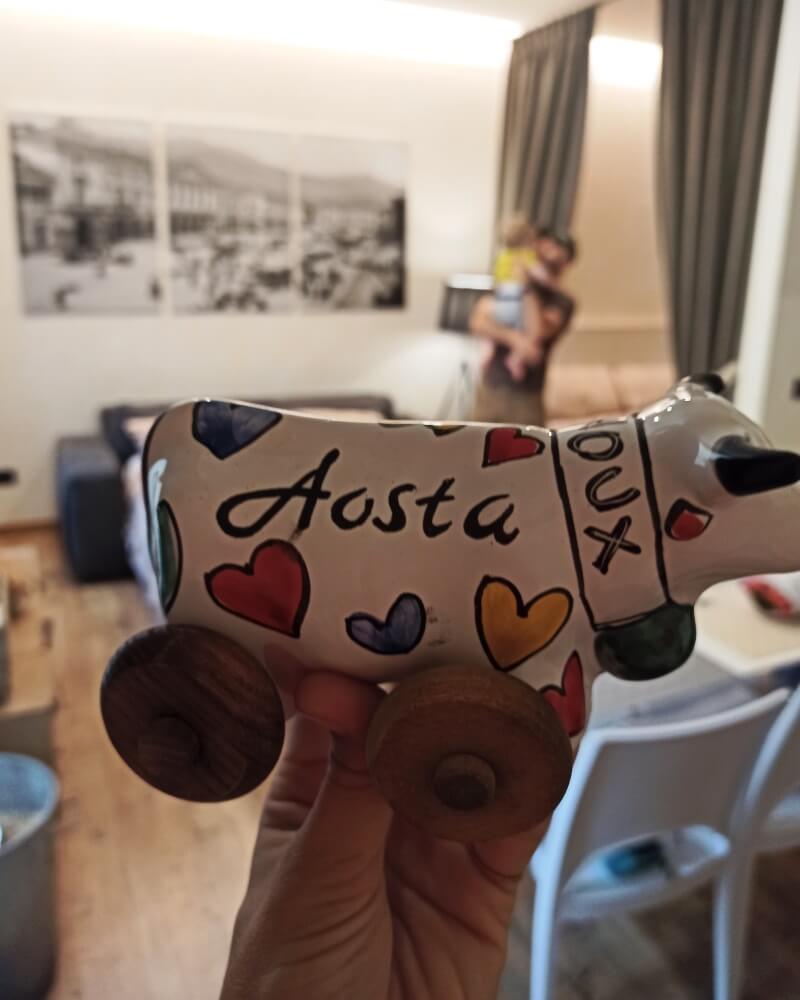
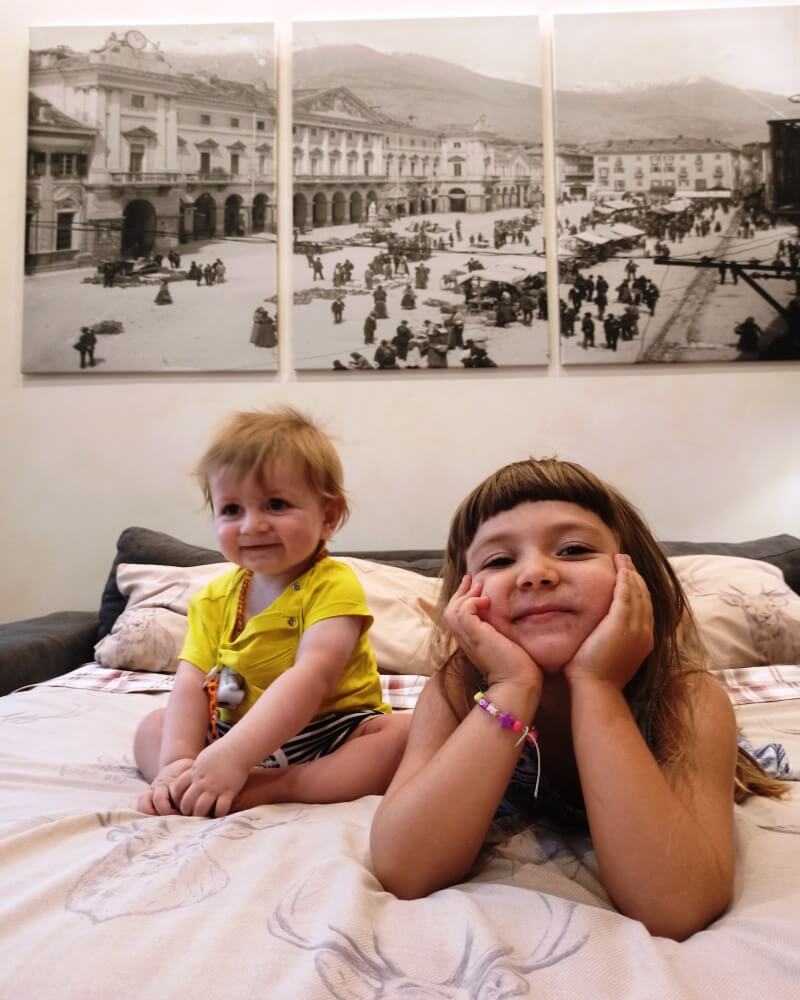
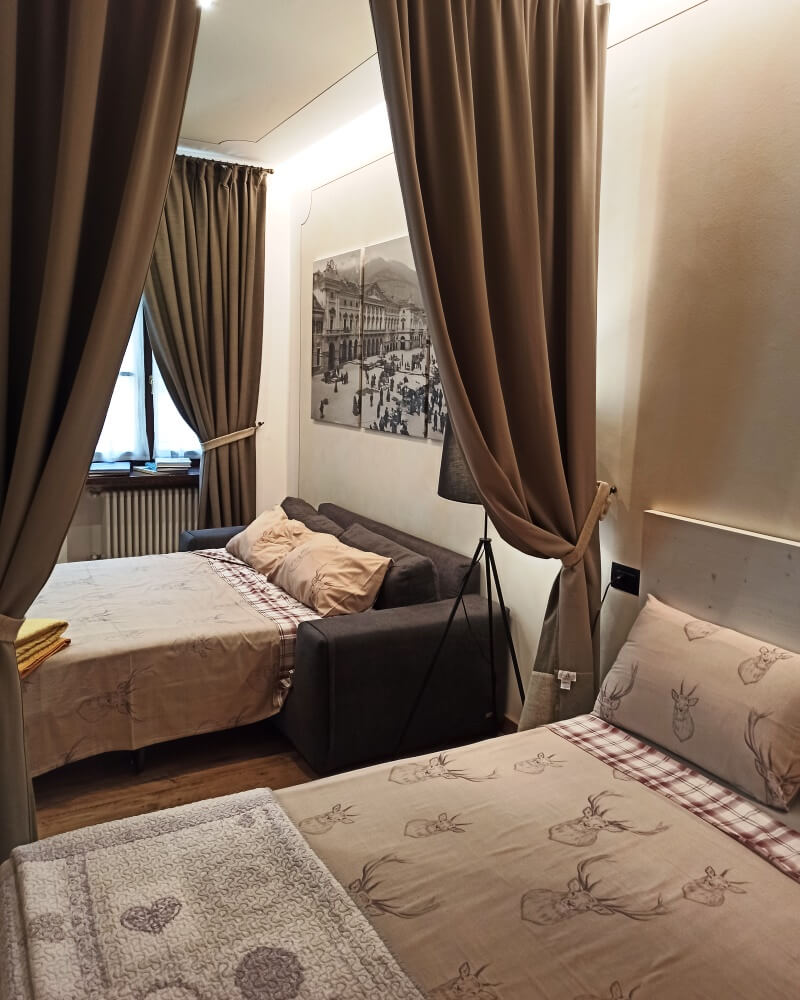
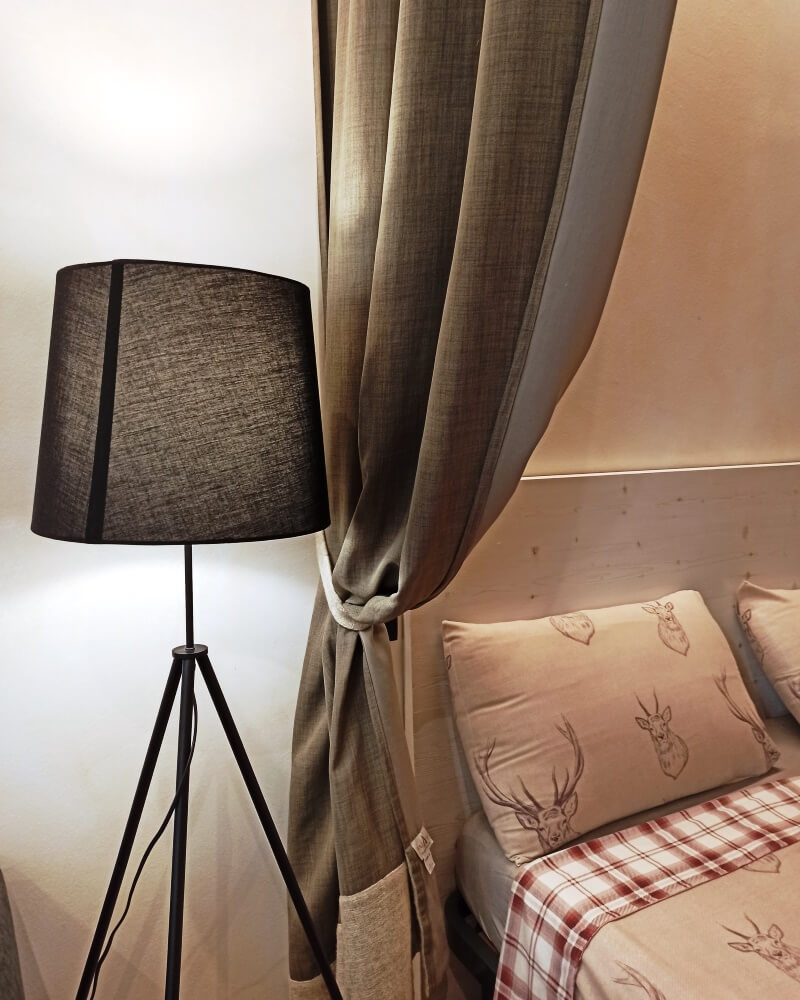
The thing we love about Aosta is that everything is close at hand.
First, we go toUfficio del Turismo which is located near the Porta Praetoria (in ancient times it was the main entrance to the city. It has two parallel arches, which are 12 meters apart, each with three passages: one central for wagons and two lateral ones for pedestrians). We collect the "Aosta Archeologica" cumulative ticket: a single ticket that allows access to the main archaeological sites of Aosta: the Roman Theater, the Forensic Cryptoporticus, the Paleochristian Basilica of San Lorenzo, the Regional Archaeological Museum and the Megalithic Area of Saint -Martin de Corleans. The ticket is valid for one year!
After a delightful walk in the historic center, wandering among the stalls of the city market (which takes place on Tuesdays and Saturdays), after eating an excellent risotto with fontina and honey in a typical restaurant and admiring the ancient Arch of Augustus (monument symbol of Aosta. Erected in 25 BC, date of foundation of Augusta Praetoria, in honor of the victory of Emperor Augustus over the Salassi) I would say that it is time to use our ticket and get to know the capital of the Aosta Valley more deeply!
 MAR - Regional Archaeological Museum
MAR - Regional Archaeological MuseumThe preparation of the MAR - Regional Archaeological Museum is divided into a thematic and chronological path.
The finds found in the Aosta Valley are very interesting, ranging from the Mesolithic to the Salassi period, continuing up to the Roman phase of Augusta Praetoria and the Christian-medieval one.
In the basement of the Regional Archaeological Museum are the remains of the south-west corner of the eastern tower of the Porta Principalis Sinistra, one of the four city gates of Augusta Prætoria, with the Roman usage plans and the only stretch of embankment still leaning against a stretch of the Roman walls.
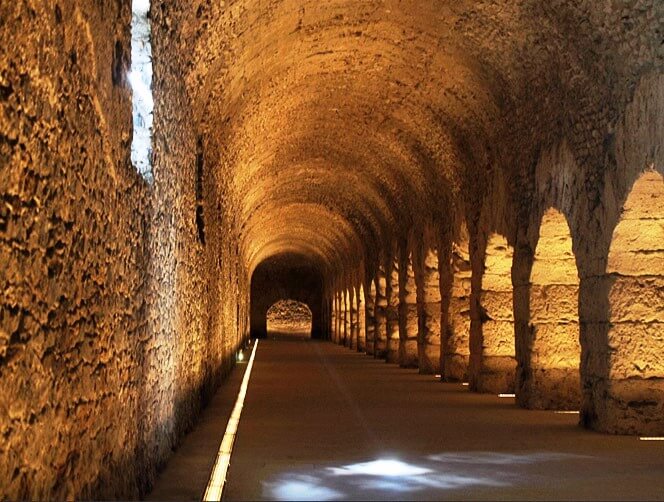
A monumental construction dated between the end of the first century BC and the beginning of the first century that delimited the sacred area of the is a large basement structure consisting of 2 parallel galleries supported by sturdy pillars and illuminated by a series of windows placed on the internal sides. (It is one of the best preserved Roman underground monuments and the video that reconstructs the phases of its construction is also very interesting).
Exactly next to the Cryptoporticus you will find the Cathedral of Aosta: the Cathedral of Santa Maria Assunta.
There is something to be enchanted by looking at the facade.
The Cathedral, mother church of the diocese of Aosta, is certainly the most important Christian building in the region and also the oldest. Archaeological investigations have made it possible to establish that the church dates back to the early stages of the spread of Christianity in the Aosta Valley. In the second half of the fourth century it was already made up of a single nave building of about forty meters in length, with different service rooms and two baptisteries, it had been created within an older complex close to the Roman cryptoporticus.
The area, brought to light in 1969, extends for about one hectare and reveals one of the most interesting archaeological sites in Europe. Initially configured as an outdoor sanctuary intended for the worship of the living, the area assumed funeral functions only in the last centuries of the third millennium, becoming a privileged necropolis, with monumental tombs of various megalithic types.
The exhibition path of the megalithic area of Aosta begins with a temporal descent from today to prehistory: along a path dotted with images referring to human history, the walkways from the museum entrance lead the visitor to the level of the actual archaeological site ( about 6 meters below street level).
Here a grandiose environment opens up: the desired effect is that of an emotional visual understanding of the whole modulated by the lighting that gradually changes with reference to the different hours of the day.
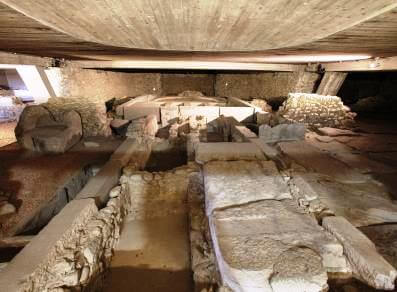
It is located on the Santorso square.
The building has a cruciform plan and is dated to the first half of the 5th century. Its use was mainly funerary.
Located in the heart of the city, along the main promenade, it is certainly one of the most photographed and picturesque monuments in Aosta.
Of the theater, which was supposed to hold three or four thousand spectators, the imposing southern facade, 22 meters high, is clearly visible. Its majesty is lightened by three superimposed orders of windows of various shapes and sizes. The construction was not contemporary to the foundation of the city (25 BC) but a few decades later.
After having explored the entire historic center of Aosta, also thanks to the use of the "Aosta Archeologica" ticket, we are ready to visit some of the thousand castles in the area and, half an hour by car, here we are in Issogne in the presence of its wonderful medieval castle, one of the most important of the European Middle Ages.
Entering the castle gives the impression of living in a fairy tale: at the entrance, on a large courtyard and an Italian garden, stands the famous wrought iron Pomegranate fountain. The interiors, beautifully frescoed, are set up with numerous original pieces of furniture. We fell in love to admire the magnificent frescoes that portrayed scenes of everyday life from the Middle Ages preserved in an almost impeccable state.
It is possible to reach the castle by leaving the car or bus in the free parking area located 150 meters away from the ancient residence.
Visiting castle it is inevitable to identify with the daily life of a lady or a knight of the Middle Ages: after passing the double walls with turrets equipped with loopholes, you enter a refined residence, emblem of the power of its owners, scattered with valuable fifteenth-century frescoes, large fireplaces including one of 18 m, monumental stairways and singular symbols.
Representative seat of the most important family in the Aosta Valley, the Challants, the castle of Fénis combines the peculiarities of the fortification with the distinctive features of the noble residence.
It is possible to reach the castle along a slightly uphill road that starts from the car and bus park near the picnic area.
This morning we will dedicate it to a true engineering masterpiece, a monumental example of Roman architecture: the aqueduct bridge of Pont d’Ael, a grandiose masonry built in the year 3 a. C.
It is still perfectly preserved and can be visited: 56 m high from the level of the watercourse and more than 50 long; it has a double passage, the upper one: open-air paved with large squared stone slabs that allowed the water to flow, the lower one: covered and illuminated by windows, allowing pedestrian transit.
It is a stop that we highly recommend!
Today we start: direction Introd to the discovery of Parc Animalier.
Families are the ideal users of the Park which aims to respect and preserve typical Alpine animals such as ibex, chamois, marmots and various species of birds of prey as well as a multicolored flora.
Nora is very excited and we enjoy a beautiful and up close show with the ibex. We went just before lunchtime, what better opportunity than to have a picnic in the area equipped with tables and games for children?
The park is open from April to December every day from 9:30 to 18.00
In this oasis the animals are protected and safe, they do not run away, they simply live, with their ecosystem in harmony and balance.
We leave Aosta definitively, tonight we will go to sleep in a characteristic mountain house of our own in Melignon, a very small village in the heart of the Gran Paradiso National Park.
Marco welcomes us at the StudiO’ Melignon: the burning stove, the wooden walls and the exquisite taste of the furniture make us feel like in the huts that are dreamed of in the collective imagination.
Peace reigns supreme, not a noise, a sound, a light ... just think that the next day we woke up all around 10 in the morning.
We take the opportunity to take a ride in this delightful village.
The flowers, the fresh air fill us with well-being.
If we had more time we would have spent a few more days here.
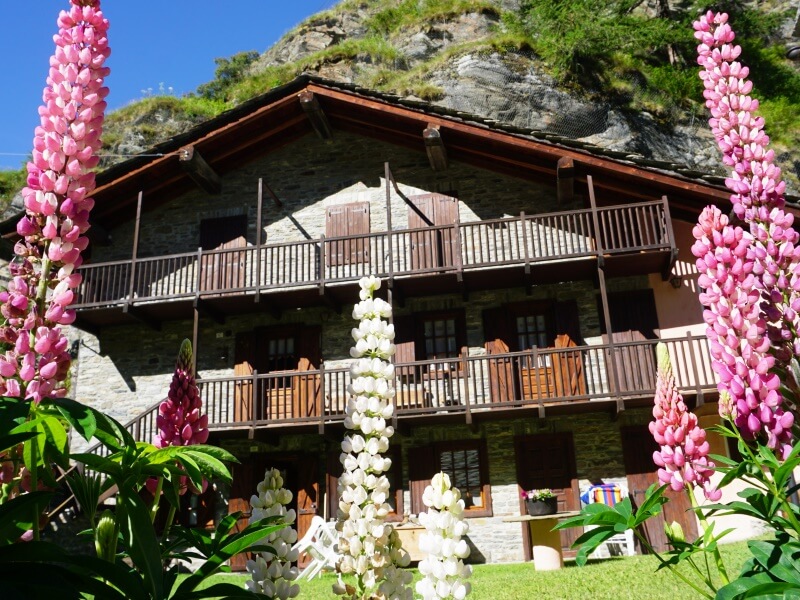
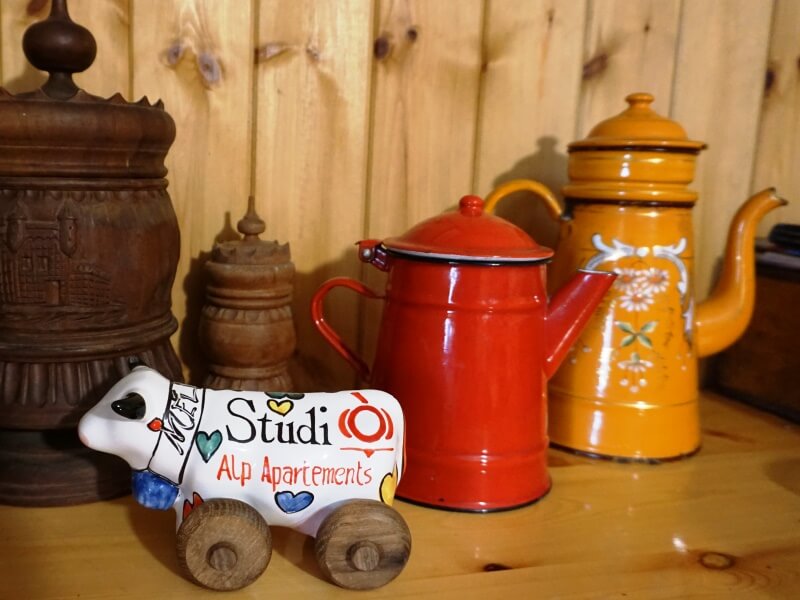
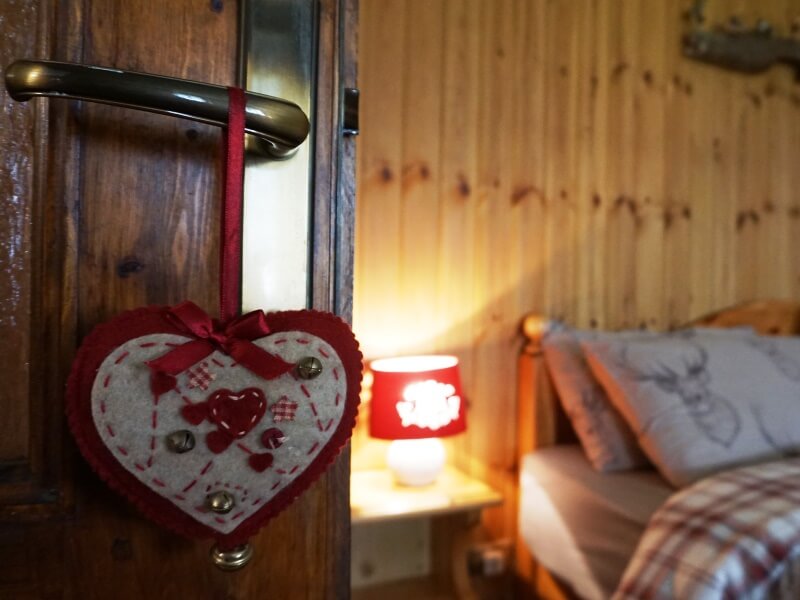
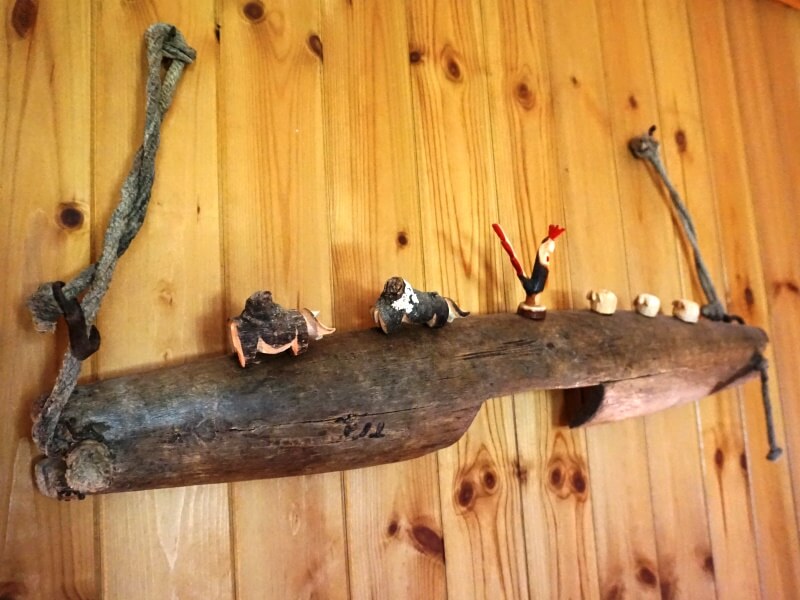
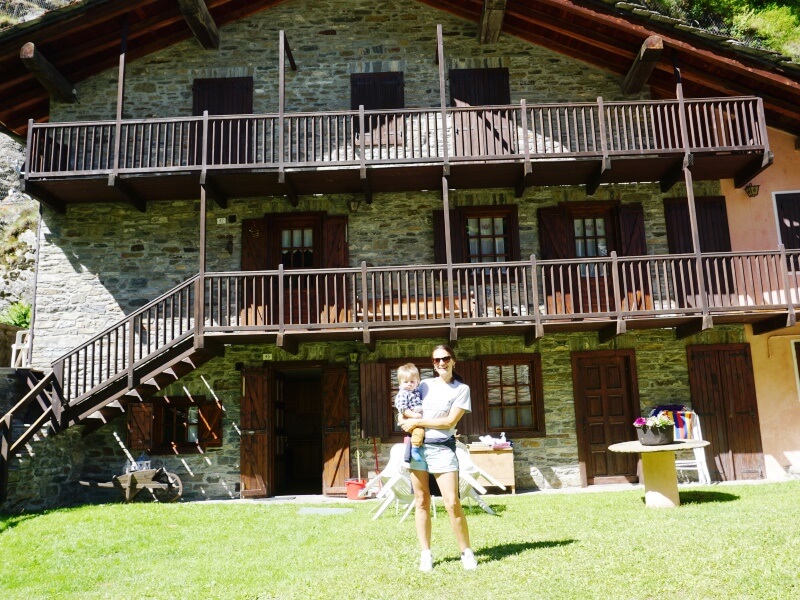
This is the ideal starting point for numerous excursions to discover some of the most beautiful corners of the Rhêmes Valley, in fact, the apartment is located about 5 minutes by car from the capital and, on the advice of the kind Marco, we decide to do a trip to get to know this luxuriant valley!
From the Hotel-Restaurant Boule de Neige a wonderful walk starts along the river that will take us to Lake Pellaud.
Short pit stop at a special shop: HiBou. Arianna, the owner, welcomes us, she is really sweet, she loves what she does and you can feel it.
Its Aosta Valley products are all excellent and thanks to shipping throughout Italy, for those wishing to taste something typical, they can have it shipped comfortably home.
We continue our walk following the bank of the Dora di Rhemes river and fully immersed in an explosive nature. I admit that, thanks to our City Mini GT2 stroller with Baby Jogger handle, we were able to tackle any type of terrain both downhill and uphill; even: its excellent glider board platform allowed Nora to rest during the journey! Dirt, mud and stones did not stop us!
This stroller is the ideal choice for those who love the outdoors.
Its forever-air wheels and suspensions on the front wheel, swiveling and lockable, make it suitable for any type of terrain and guarantee extreme maneuverability even on off-beaten paths.
The practical height-adjustable push handle and the hand-operated brake make it even more maneuverable and safe.
The comfort of the child is guaranteed by the large, multi-position reclining seat, which can be used from birth, and by the adjustable footrest.
Thanks to the Quick-Fold technology, the one-handed folding system, the City Mini GT2 closes quickly and compactly and, once closed, remains upright on its own.
When traveling it is really essential to have a stroller of this type, especially if you think about irregular outdoor paths.
We arrive at Lake Pellaud where we are really struck by the colors and beauty of this bursting nature, the peace that you breathe in such a place is indescribable ... It's time for a break! We return to the starting point immersed in this fairytale background and stop at Boule de Neige where we meet Sharon and her wonderful family.
Here we are delighted by many typical Aosta Valley specialties, some revisited, in fact Sharon helps her dad to cook (undisputed king of meat) and puts her creativity in the presentation of these extraordinary dishes. We tasted the best carbonada and polenta ever.
When we visit family-run places managed with harmony, serenity and competence it is really a great sight so, if you come here, you have no excuses: you have to go through here !!!
We leave again, direction: Saint Pierre to Cascina d’Orléans.
Tonight we will sleep in a tent, we will do glamping for the first time with our two children. A spectacular place to say the least. Everything is taken care of, the flowers on the wooden table, the ceramic plates lined up on the shelf, the large and welcoming bright tent with a beautiful colored carpet that reminds us of the yurt of our trip in Kyrghizstan.
The bathroom is behind a wooden door, equipped with all comforts. Taking a shower, brushing your teeth and face outdoors has a completely different flavor.
In the evening we stay out looking at the stars and reading books.
We sleep in our comfortable beds with a nice warm duvet and in the morning, opening the zipper of the tent, we are enchanted admiring the beauty of this valley.
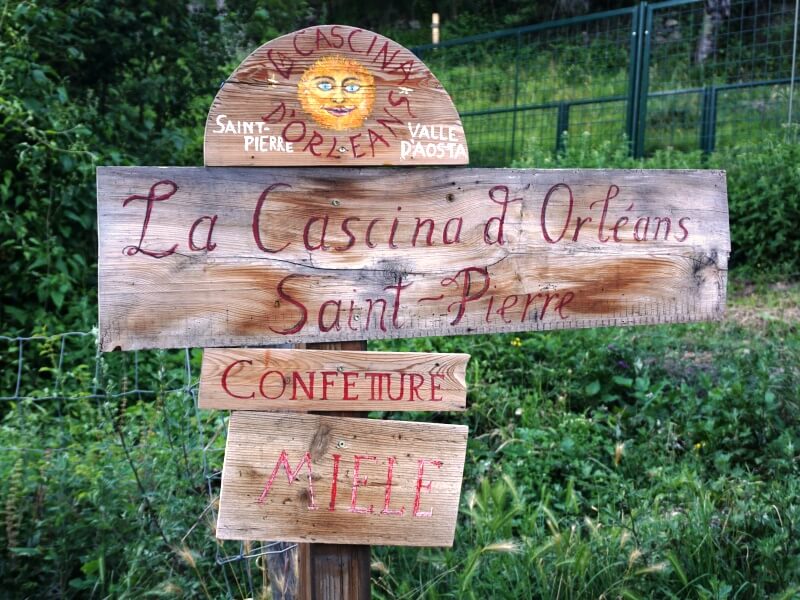
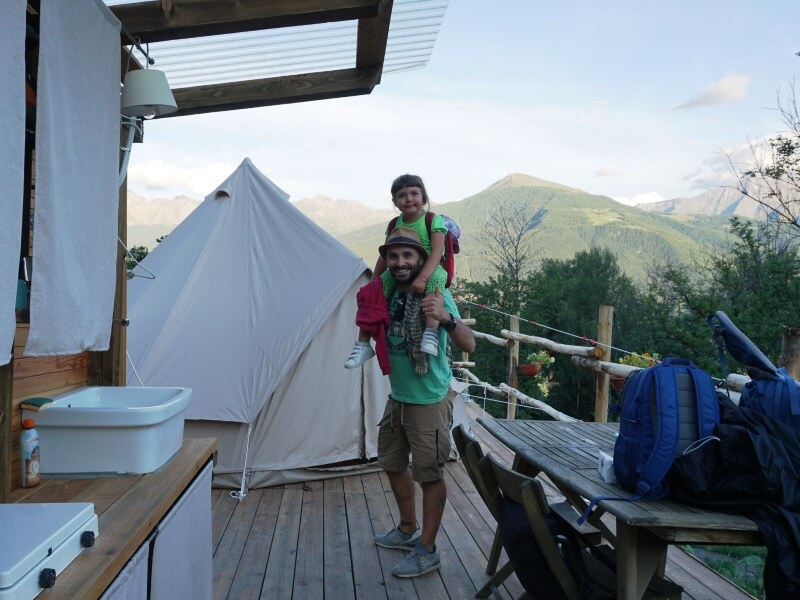
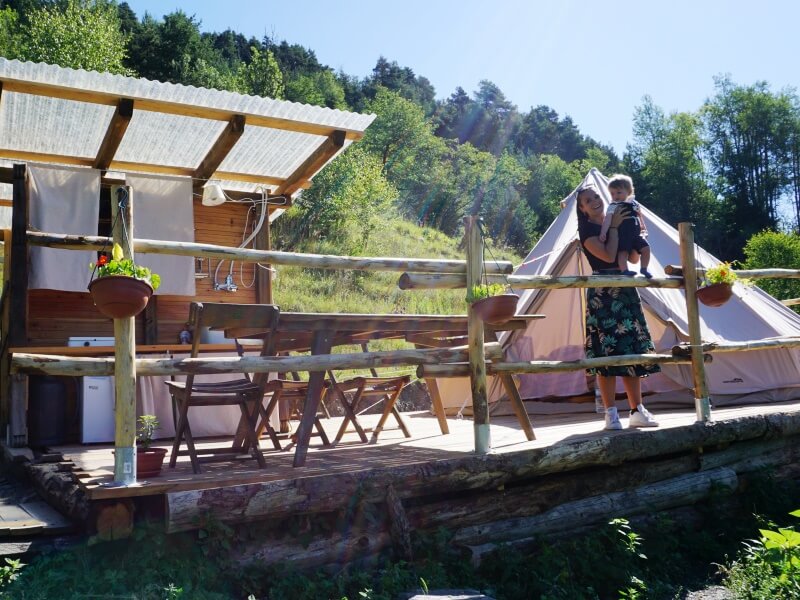
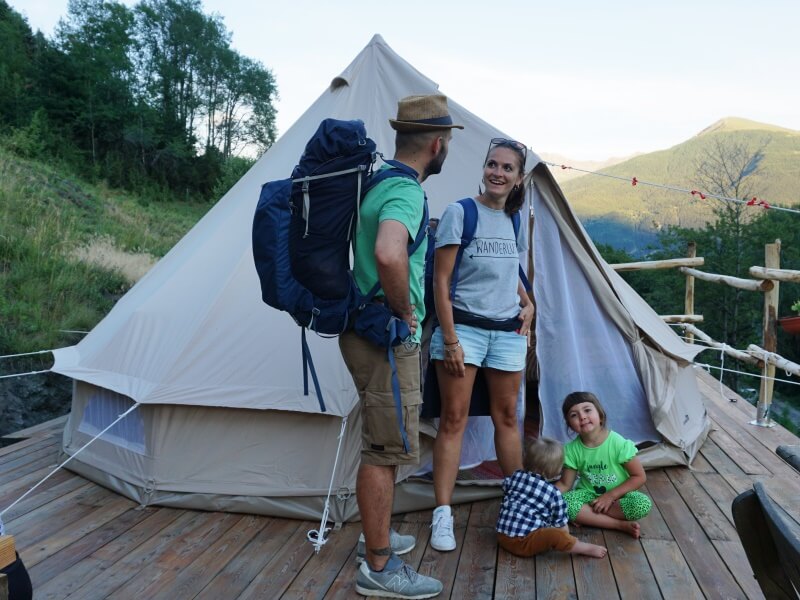
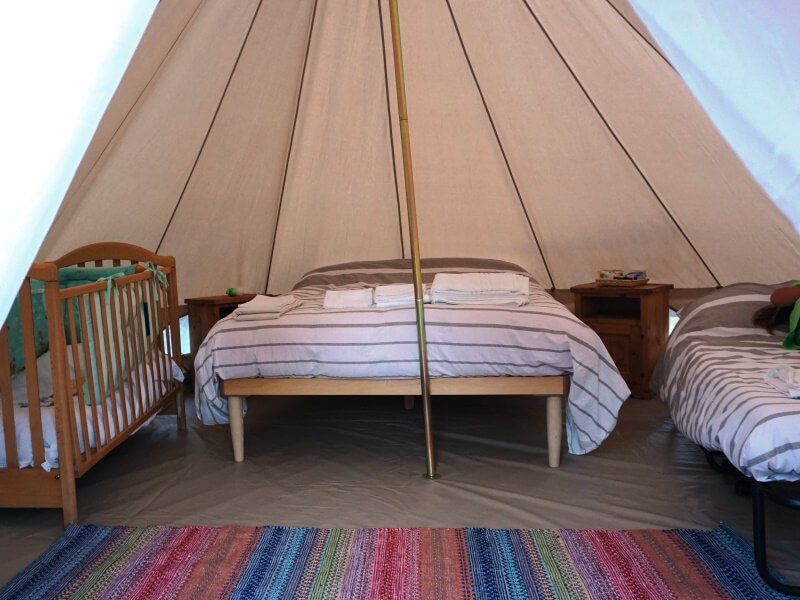
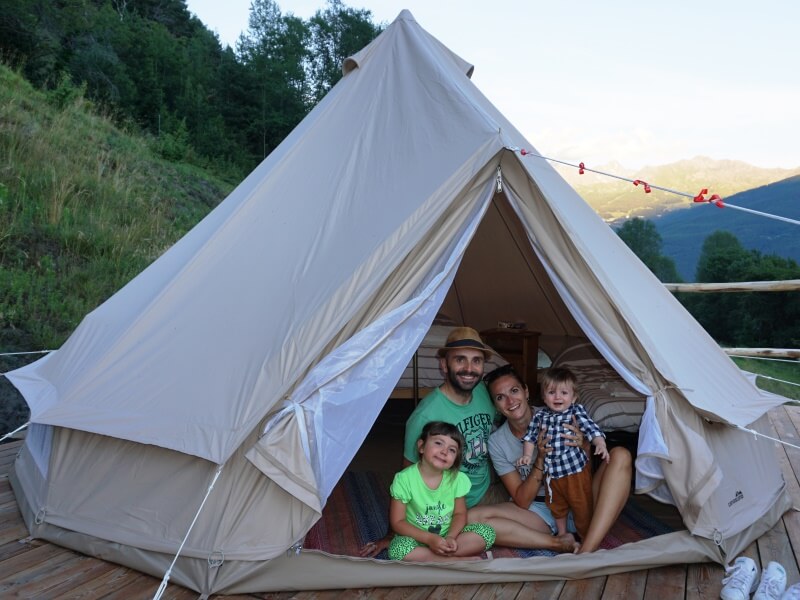
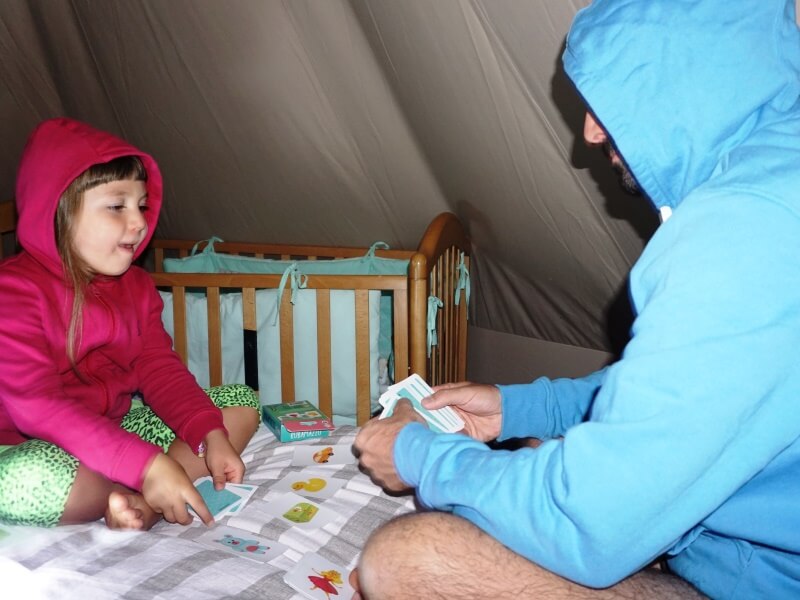
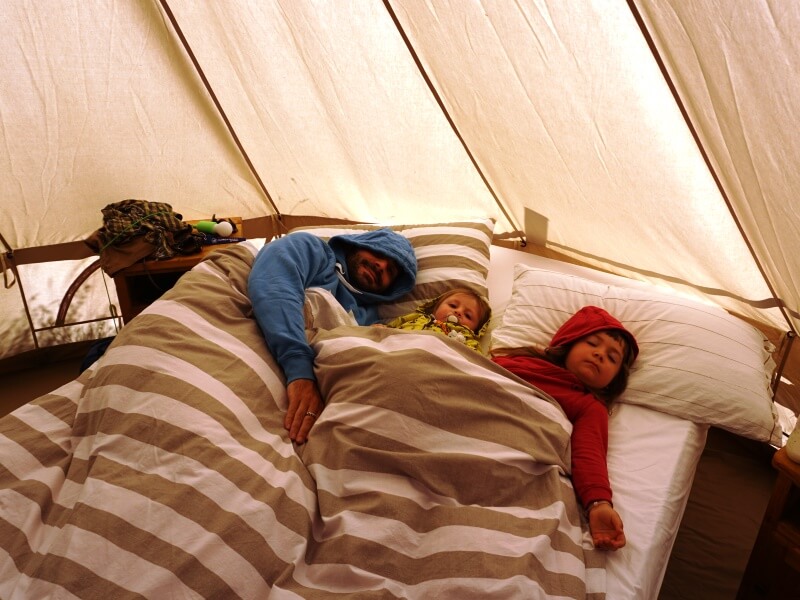
Traveling by car and wandering around this beautiful region every day, safety, as well as comfort, also for our children comes first! Moreover, if they are calm and comfortable, they will complain less and enjoy the journey more!
In this case we had no doubts using the Pivot Car Seat from Baby beCool!
This car seat can rotate 360 ° very easily to facilitate the child's loading position. The installation is with Isofix and Top Tether and can be used for a long time: from birth up to 36Kg!
Today we are particularly excited because we travel towards: Mont Blanc and Courmayeur.
We stay at theHotel Aigle welcomed by the very nice Alessandro and Mario.
This is truly a delightful place with a breathtaking view directly on Mont Blanc!
Perfect location because a five-minute walk from the Mont Blanc Skyway, near the city center of Courmayeur and a few minutes drive from the sparkling Val Ferret.
Couldn't have better location. What more do you want?
In the evening the chef delighted us with a typical Aosta Valley dinner, you can see the passion expressed in the choice of dishes of great quality and goodness. Iago, who doesn't have Nora's appetite, left her vegetable soup to eat half of my portion when she saw the homemade pasta!
We met some "regular" customers who can't help but come back here every year… And who can blame them!
Today is the big day of the Mont Blanc Skyway, a technological and engineering marvel: an all-Italian pride!
In 5 minutes on foot we arrive at our destination.
Jago, having 10 months, will not be able to climb to the top but since there is an intermediate stage: Pavillon at 2173 meters, we will take turns to stay with him.
Here is the Botanical Garden with its 900 species from all over the world!
A wall for children that can be climbed, a pond and deck chairs to rest and enjoy an enchanting view.
After acclimatizing, take the cable car back to Punta Helbronner at 3466 meters.
Here nature and its power takes over.
It is wonderful to be able to admire this spectacle from above. See its immense glacier, the climbers trying to get to the top, the ropes, the tented camps.
There are emotions that will remain forever in the heart and this is certainly one of them.
Today we completely change the area and go to Gressoney-La-Trinité, at the feet of Monte Rosa.
We will stay for 3 nights at the Hotel Dufour. Here we should spend a few words because when you find places like this you have to shout it out loud. We meet the founder of this splendid hotel built in 1959 and now totally modernized. It is truly a pearl of the area. The rooms are large, clean and perfect in every detail.
On the top floor a wellness center that guests can use: two whirlpools, a relaxation area, sauna and Turkish bath!
Relaxing among the bubbles while enjoying the spectacle of the mountains from the large window is priceless.
Special mention should be made of the tavern where there are two large fireplaces. I can't imagine the beauty of this place in winter when it's snowing outside and the fireplaces are lit and you enjoy an herbal tea on the comfortable sofas.
Next to it there is a games room with billiards and table football and right next to the hotel even a huge playground that saw us as protagonists every evening.
The dinners we enjoyed over the three evenings were truly insane.
But how beautiful it is to sleep in the mountains in summer!
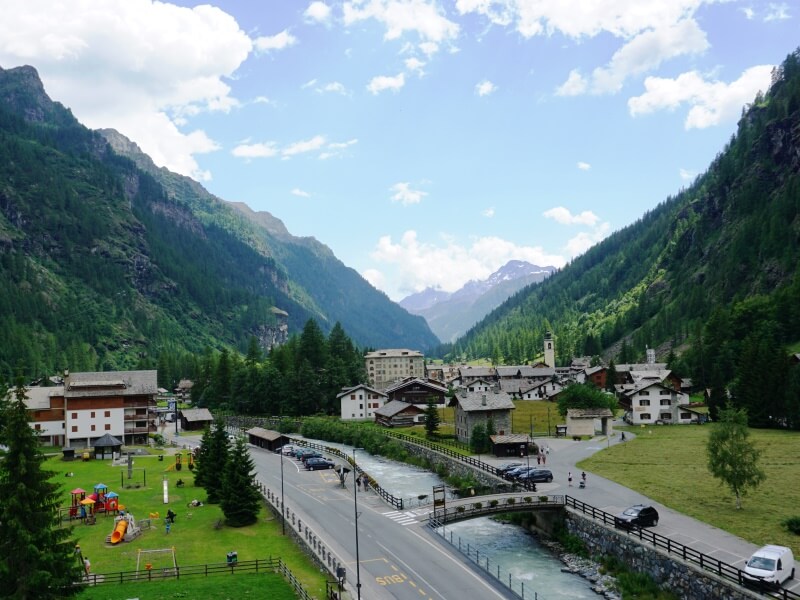
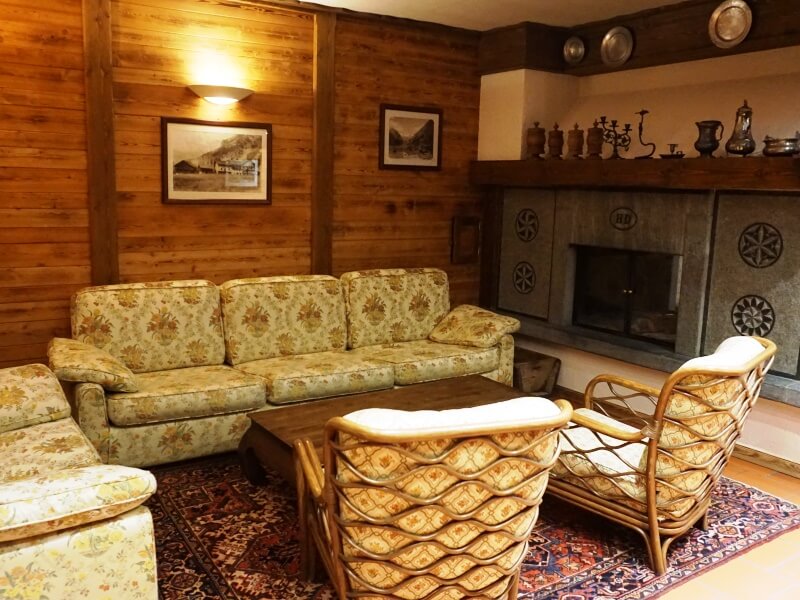
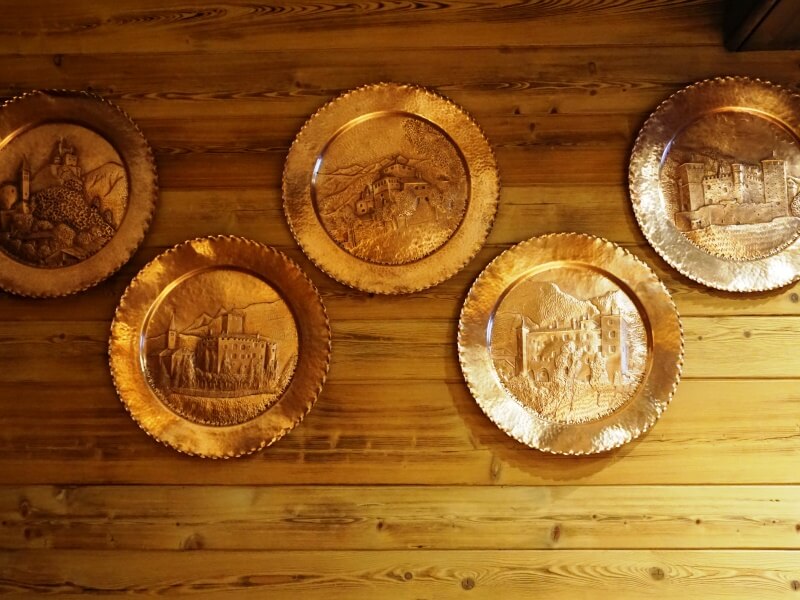
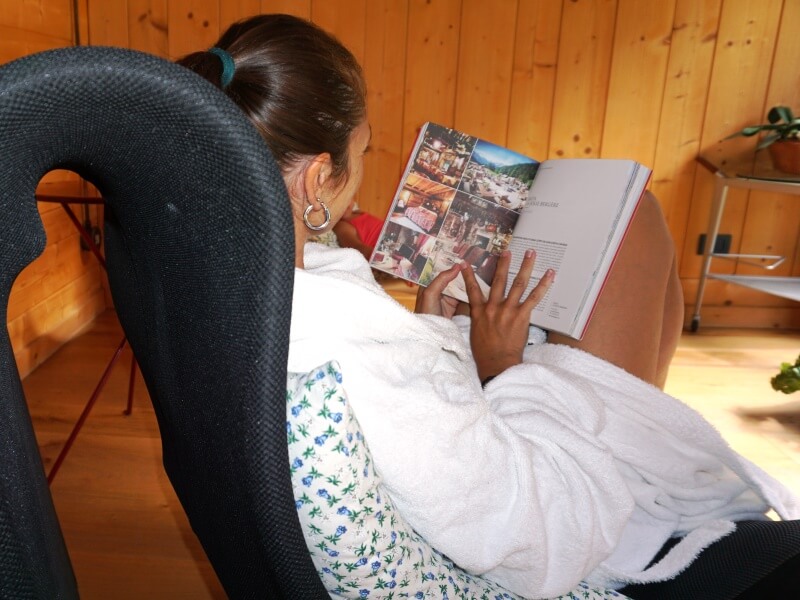
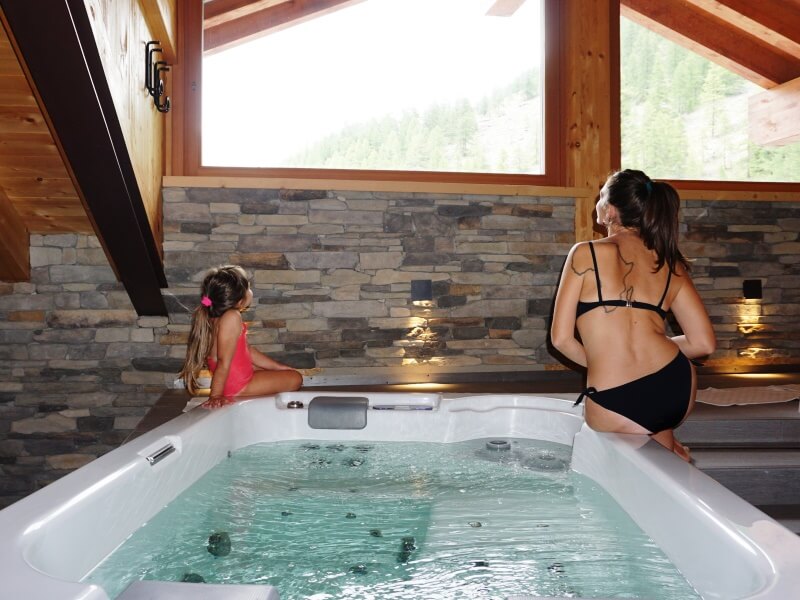
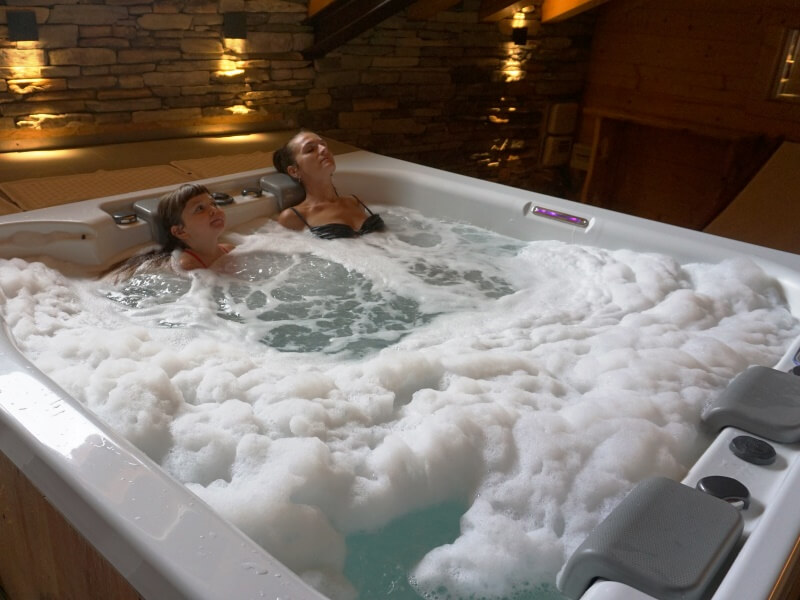
Here you are spoiled for choice with regard to the thousand paths in nature. The sweet Emanuela recommends us a beautiful walk that starts from Gressoney-La-Trinité up to Gressoney Saint Jean.
The route is really pleasant, Nora skipped for almost all six km, we laughed a lot going in search of traces of elves, met cow pastures, smiling travelers and delightful huts in an uncontaminated and bewitching nature!
Once in Gressoney St Jean take the opportunity to visit its very characteristic ancient village and relax by its lake before leaving for the uphill return or maybe take the comfortable bus to return to La-Trinité.
Gressoney Saint Jean is also famous for its marvelous Savoia Castle.
It is immersed in a coniferous forest; the residence was built at the beginning of the twentieth century on a project by Stramucci for Queen Margherita of Savoy, a great lover of the mountains and especially of Monte Rosa. It is a curious turreted building, which still retains the original decorations and a beautiful oak staircase inside. As in all the castles we visited here in the Aosta Valley, what we loved were the guides who managed to transport us to the time when these castles were fully lived.
We love to see old photos and here we really enjoyed these black and white images of Queen Margherita and King Umberto I in the snow.
Next to the residence, there is an alpine garden in which a thousand mountain plants are collected. This, as Nora says, really looks like a fairytale castle.
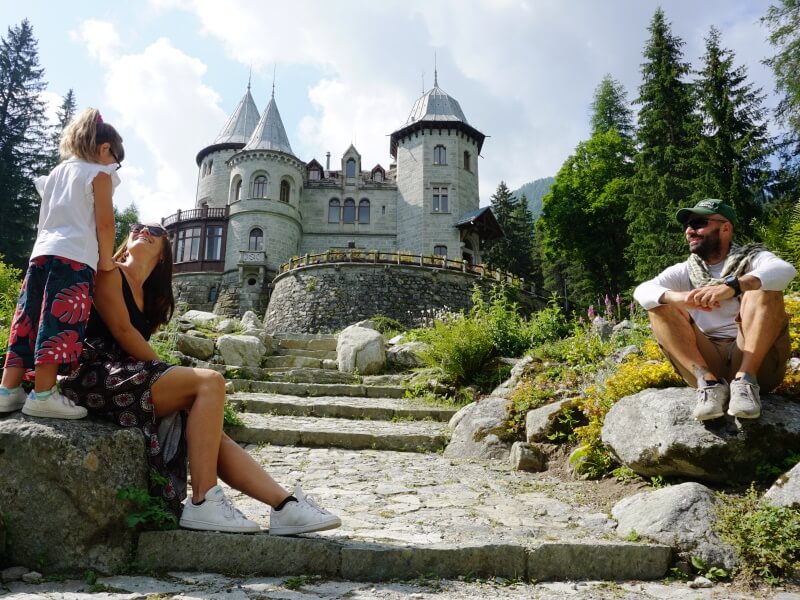
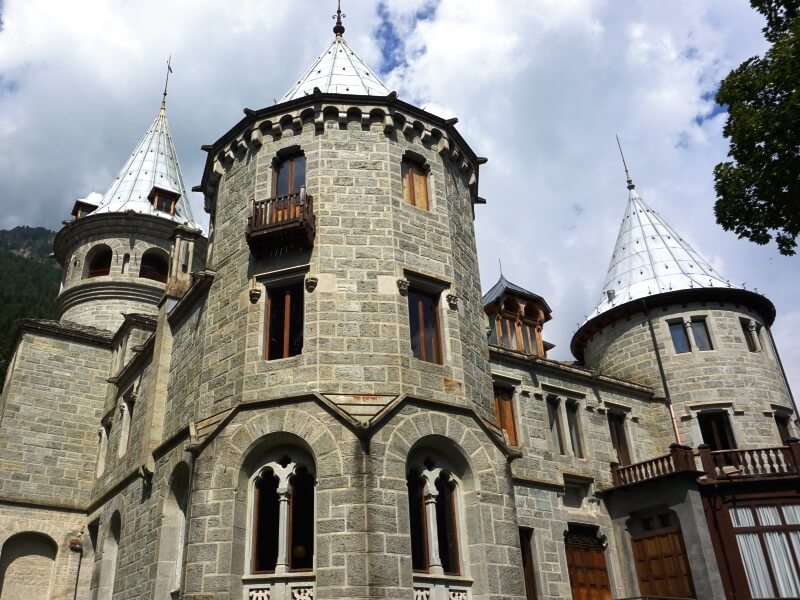
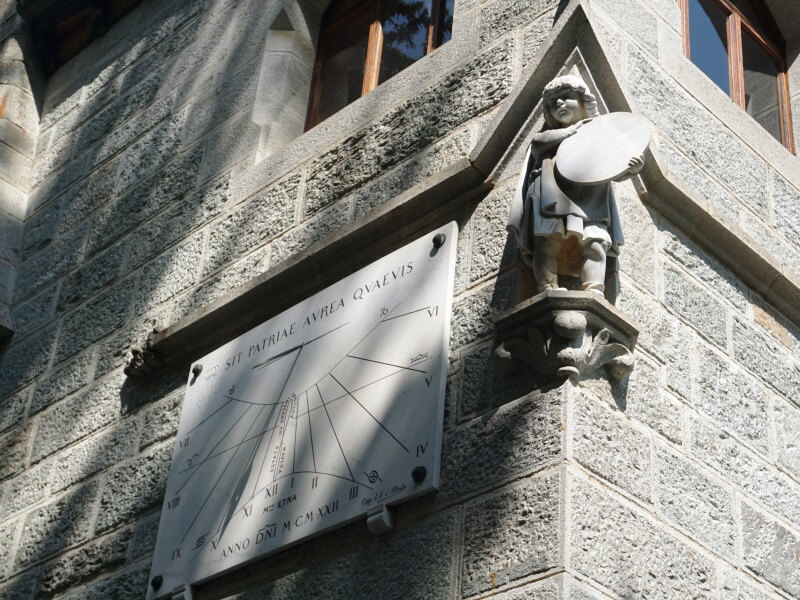
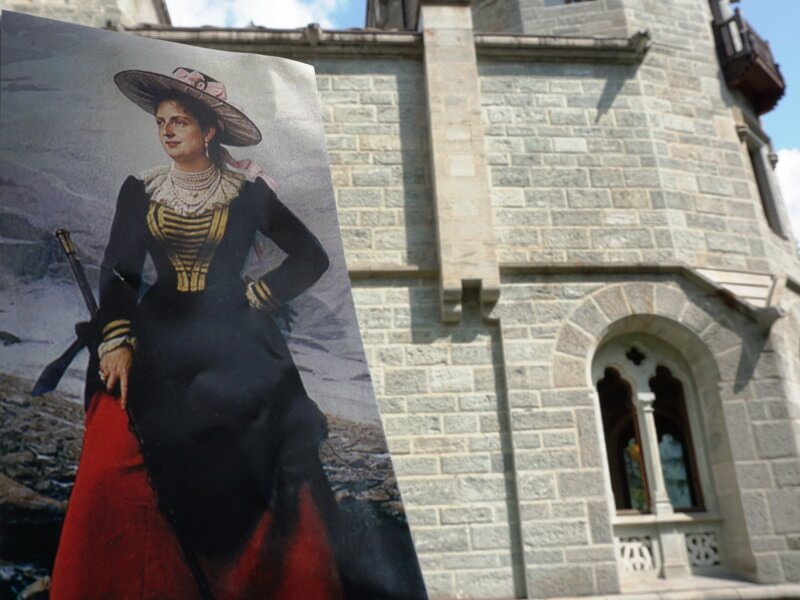
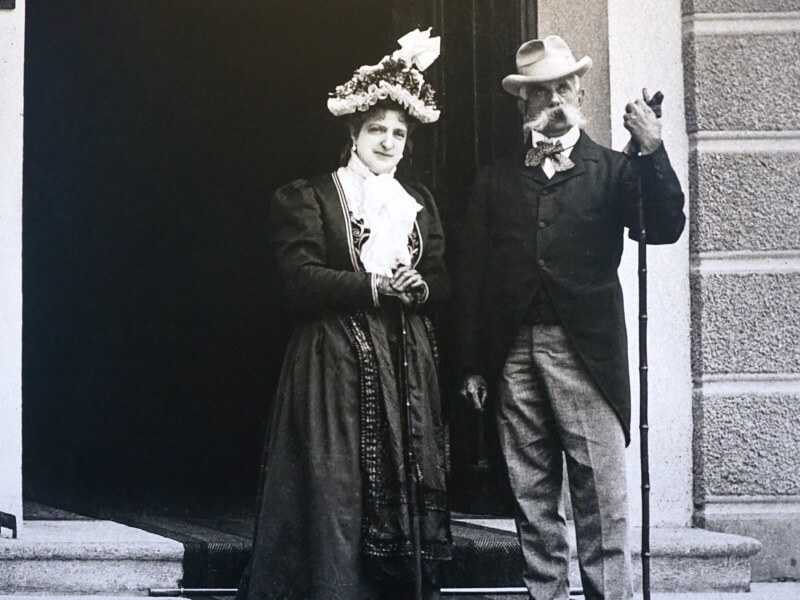
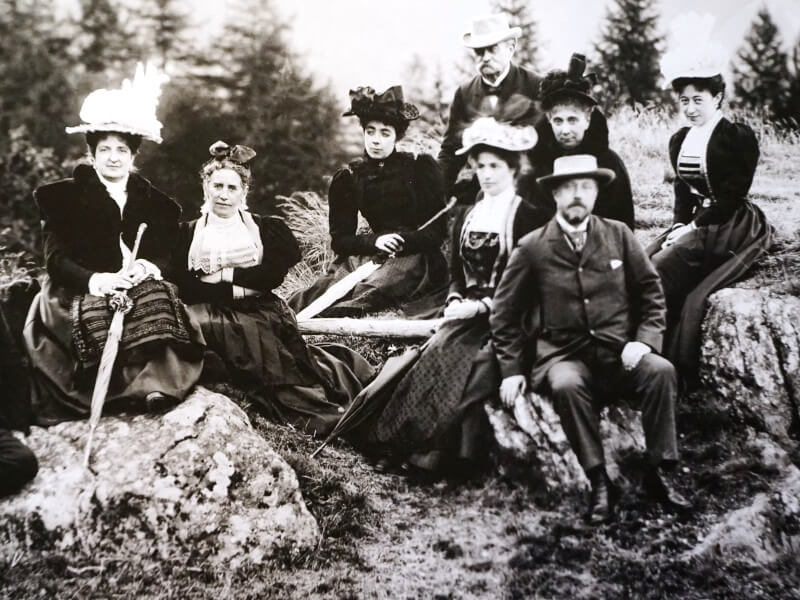
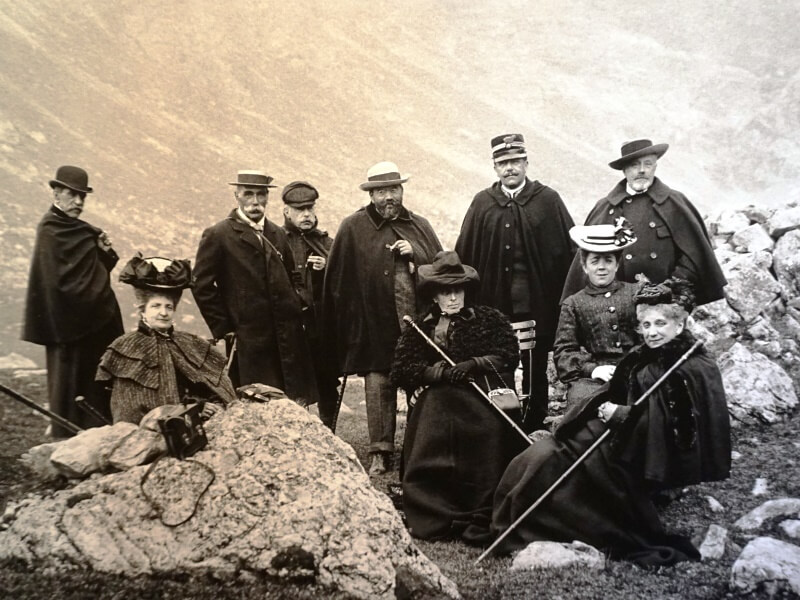
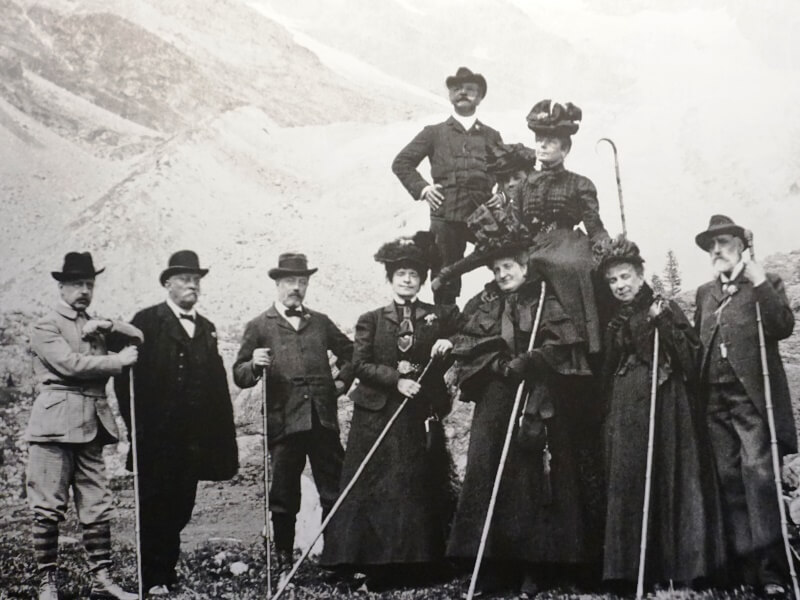
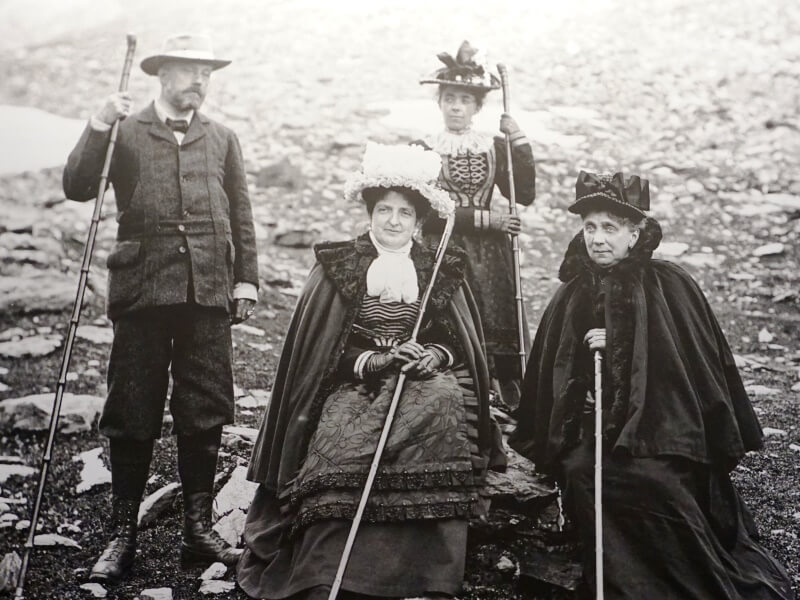
Before returning home we dedicate a few hours to visit the Bard Fort.
In the middle of the steep slopes of the gorge rises an impervious rocky knoll dominated by the large fortified structure. Of ancient origin, it was rebuilt in 1838 after the dismantling ordered by Napoleon in 1800. It is an international tourist cultural center, home to permanent thematic itineraries, exhibitions, events and conference rooms.
Here you can visit not only the prisons but also various exhibitions. We have chosen “Wildlife Photographer of the year”. I particularly wanted to see this exhibition and obviously it did not disappoint me. Nora was passionate about all the stories of every single animal. At the end of the exhibition there is a somewhat crude path but, in my opinion, instructive for our children, namely that of the exploitation of animals.
We also go to the alpine museum to which we should dedicate more time because it is full of information. Super recommended not only for those with children.
We end the visit with the path to the prisons, made up of solitary confinement cells. They are perhaps the most fascinating place in the Fort. They house 24 Cells with dimensions of 1.3 x 2 m arranged along 4 sections.
It's incredible but two weeks of travel have already flown! Before leaving, we make a nice load of fontina to take home.
These days in the Aosta Valley were a real breath of fresh air for both the eyes and the heart. We saw breathtaking landscapes, met kind and hospitable people.
We are happy because during this trip we have received many messages from people who did not know this area of Italy and who are now intrigued by it.
As we always say: sometimes we go to the end of the world and leave out the beauties we have at hand.
This is just a: "see you soon"!
Bye beautiful Aosta Valley.
Error: No feed found.
Please go to the Instagram Feed settings page to create a feed.